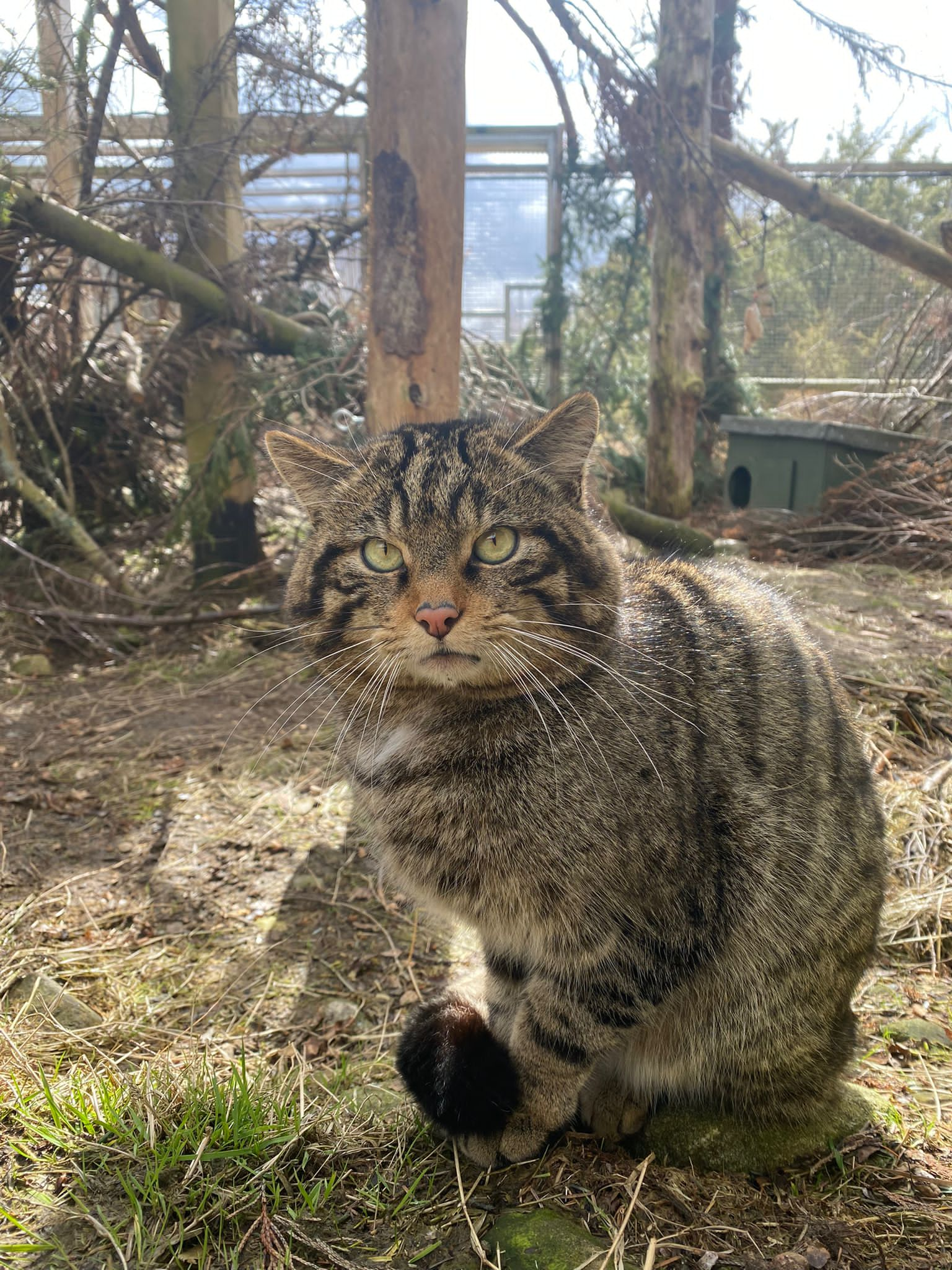The risks of conservation translocations
Conservation translocations (the deliberate movement and release of animals into the wild for conservation purposes) are challenging and full of potential complications. To maximise the probability of success, we work with international conservation experts in behavioural ecology and conservation genetics, specialist veterinarians, social scientists, and ecologists.
Despite extensive preparations, one of the most difficult aspects of any conservation translocation is predicting how an animal will respond to being released. Their survival is contingent on their individual behaviour in a new environment, and while we have tried to best prepare the wildcats for this eventuality by moving them into large and natural pre-release enclosures (modelled on and informed by other successful carnivore recovery projects, for example, the Iberian lynx in Spain and Portugal), we cannot ultimately control how they will react.
Life in the wild is hard for wildcats, with studies undertaken in Germany finding a juvenile mortality rate of 70-80%, meaning that out of a litter of four, often only one or no kittens survive the first four months of life. Although the wildcats we are releasing will be around one-year old when they are released, there are still a multitude of risks that await them, including road traffic, prey fluctuations, interbreeding (hybridisation) with, and disease transfer from domestic feral cats, extreme weather events, persecution and human disturbance. We are prepared for the sad reality that some of the released wildcats will not survive.
Although we are intensely preparing the wildcats for these challenges, we cannot eliminate the chance of every adversity. Given all these potential risks, why are we taking this approach?
After conducting an independent review of wildcat conservation in Scotland in 2019, the International Union for Conservation of Nature’s Cat Specialist Group concluded that there was no longer a viable wildcat population living wild in Scotland. The review recommended an increased focus on breeding for release to safeguard this iconic species from extinction.
The IUCN’s Cat Specialist Group advises on the conservation of all 40 wild cat species globally. Its individual members are experts on conservation techniques, threat mitigation, animal husbandry, breeding for release, genetics and conservation strategies.
We base all our activities on scientific evidence and our own expertise, as well as on the recommendation of experts, and are committed to working collaboratively with experienced partner organisations.
While there may still be some wild-living wildcats in Scotland, data collected from the last ten years indicates it is extremely unlikely that there is a viable population remaining. This is a very sad reality to face, but our project offers hope for the wildcat as we work towards restoring this charismatic species to Scotland, through breeding and release.
Inaction will result in extinction. The wildcat is one of our most threatened mammals and one of Scotland’s most iconic species, embodying wild nature for the Scottish Highlands. The species also has a long history in Scottish culture and mythology and was revered by many Highland clans who used the wildcat in their clan crests. As human activity is responsible for the wildcat's decline, we have a responsibility to take action to protect our Highland tigers.
Every translocation, however successful, increases our knowledge of wildcat behaviour and ecology. It is our responsibility to make use of this knowledge, so that subsequent releases have a better chance of succeeding than the ones preceding them.

